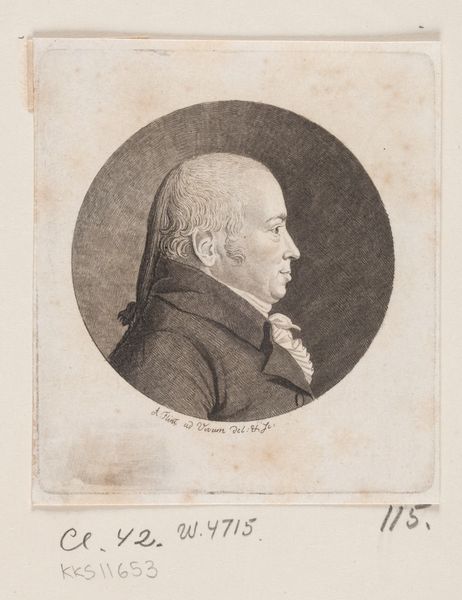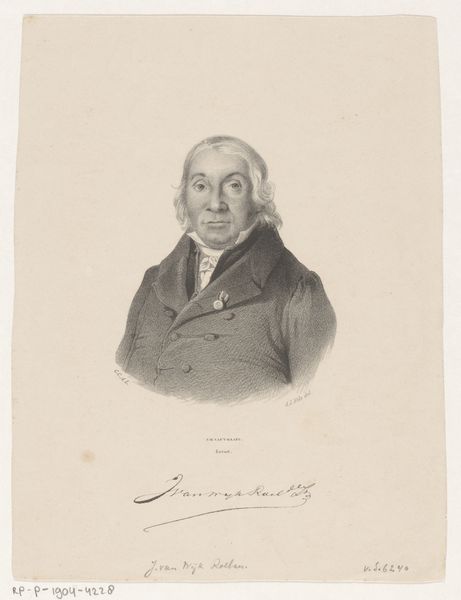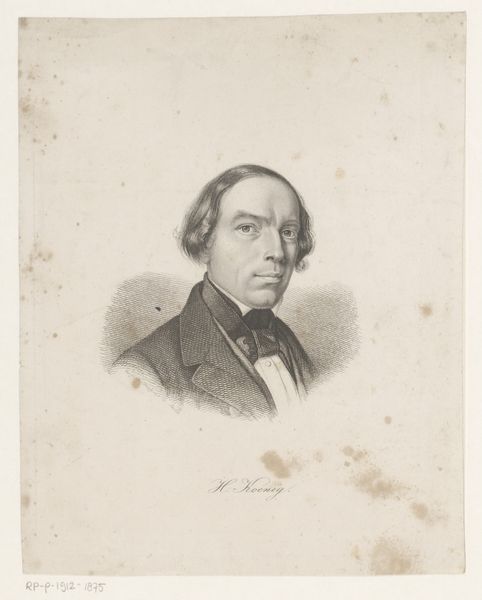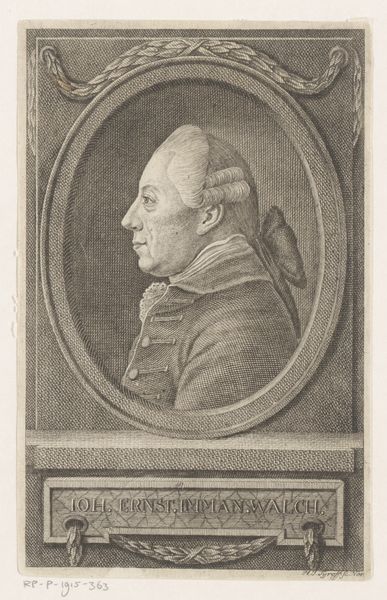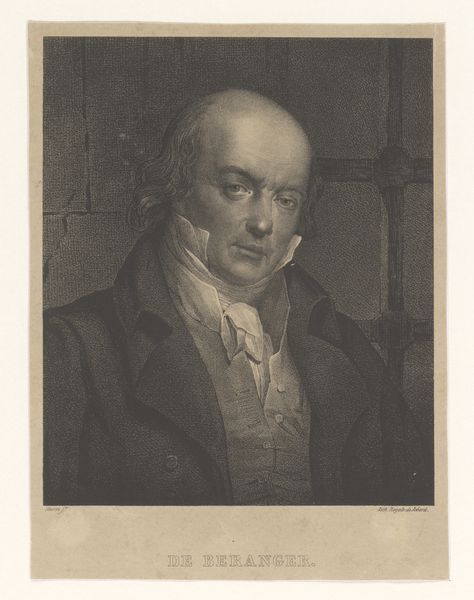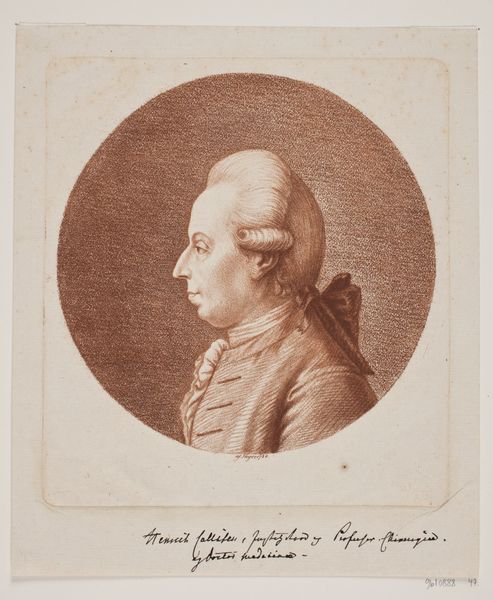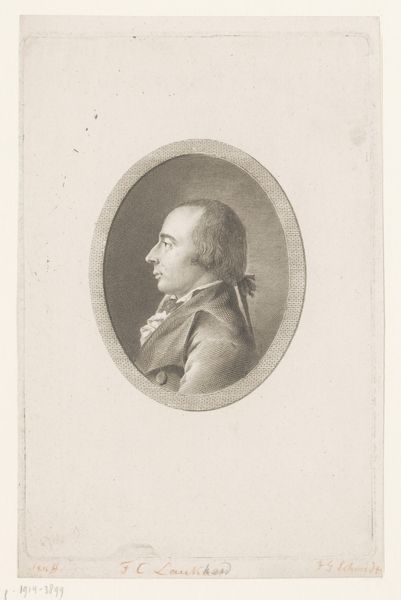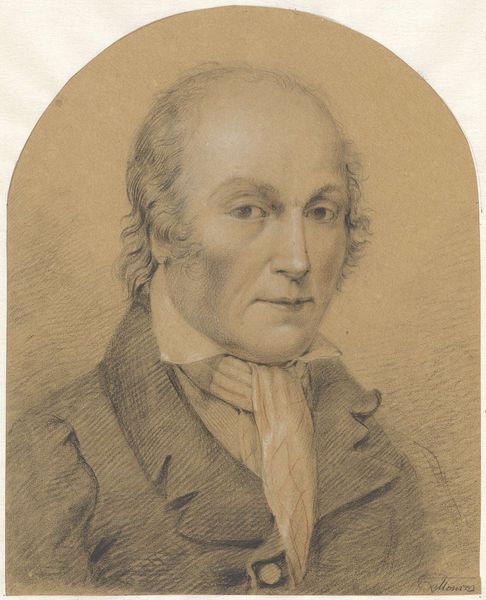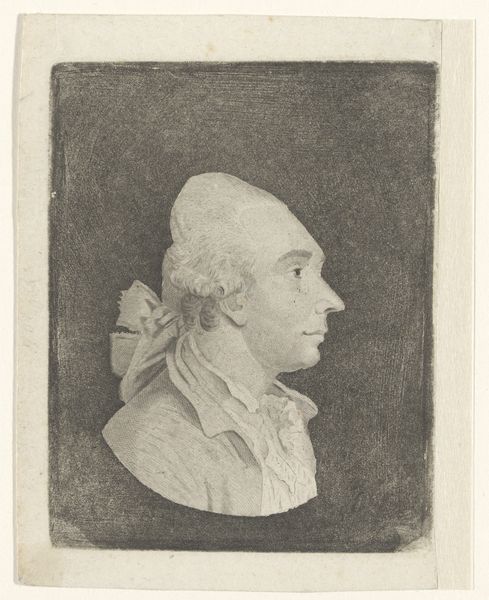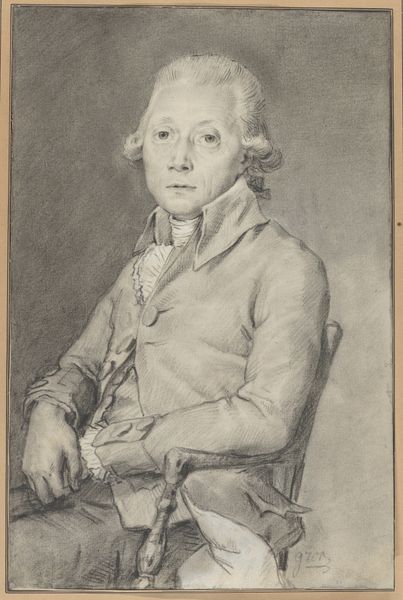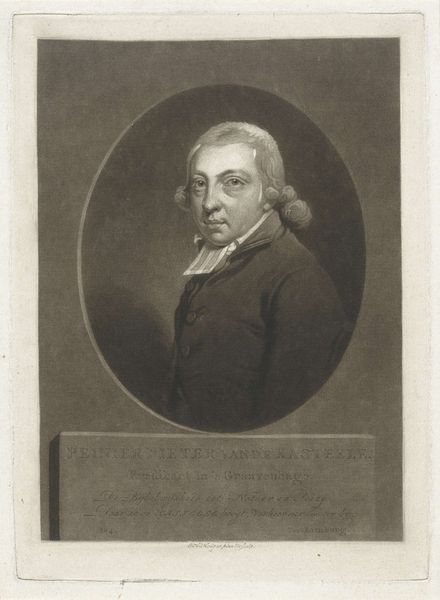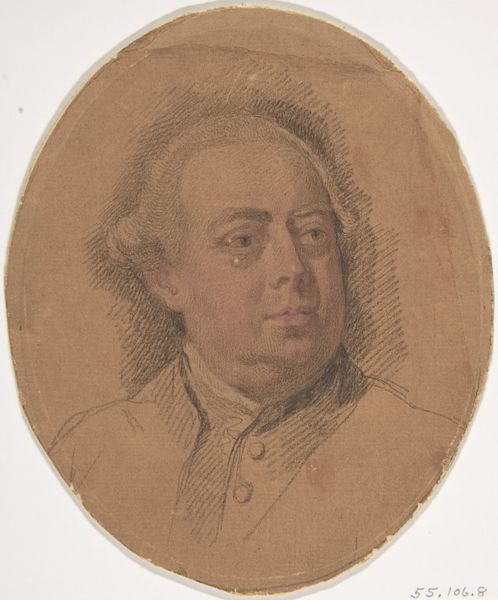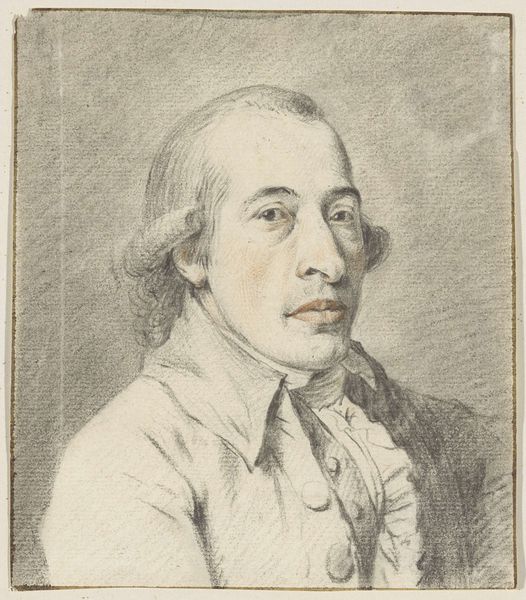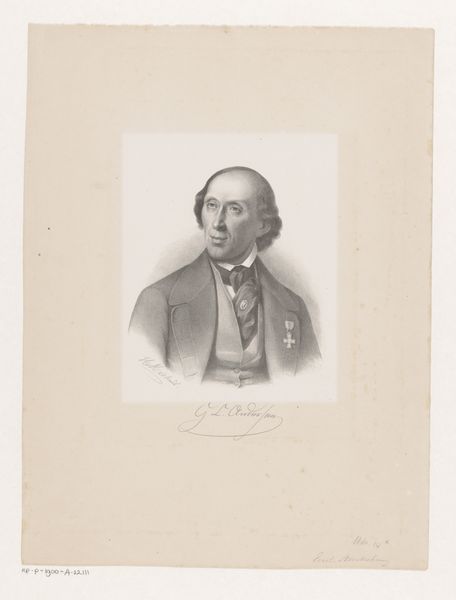
drawing, charcoal
#
portrait
#
drawing
#
neoclacissism
#
charcoal drawing
#
portrait drawing
#
charcoal
#
academic-art
Dimensions: 460 mm (height) x 320 mm (width) (bladmaal)
Editor: Here we have Jens Juel’s “Portrait of the Sculptor, Professor Nikolaj Dajon” from the 1780s, crafted with charcoal. I’m immediately struck by how meticulously rendered the face is, particularly in contrast to the sketchier handling of the clothing. What stands out to you? Curator: Well, let’s consider the materiality. Charcoal itself speaks volumes. It’s an easily accessible material, a byproduct of wood-burning. Juel, by choosing charcoal, connects this refined portrait to the basic process of production. The "professor" is shown as an elegant portrait, yet rendered through such humble and ubiquitous materials that would be available to common tradesmen. Don’t you find that to be curious for such an established sculptor? Editor: I hadn’t considered the implications of using charcoal versus, say, oil paint. Is the choice of material a comment on Dajon’s own work, connecting him to the physical labor of sculpting? Curator: Precisely! It collapses the assumed hierarchy between fine art and craft. It's also significant to consider that Dajon himself would have been acutely aware of material processes within sculpture, specifically in clay, wood or stone, and this portrait subtly acknowledges the social role of sculptor, as opposed to elevated social elites that tend to fill such portraits. The neoclassical style, often associated with the elite, is, here, ironically depicted with rudimentary charcoal from a furnace. What implications can be drawn about Neoclassical ideals being realized and imposed by such tools? Editor: I see. So the very act of creating this portrait challenges conventional understandings of artistic skill and social standing in that period. Thinking about it now, the almost photo-realistic likeness feels less about immortalizing wealth and status and more about documenting a tradesman and materialist. Curator: Precisely, we have shifted our initial observation of portrait to production value through close-reading. Hopefully that gives us an expanded understanding of Danish portraiture as a cultural product during the late 1700's.
Comments
No comments
Be the first to comment and join the conversation on the ultimate creative platform.
